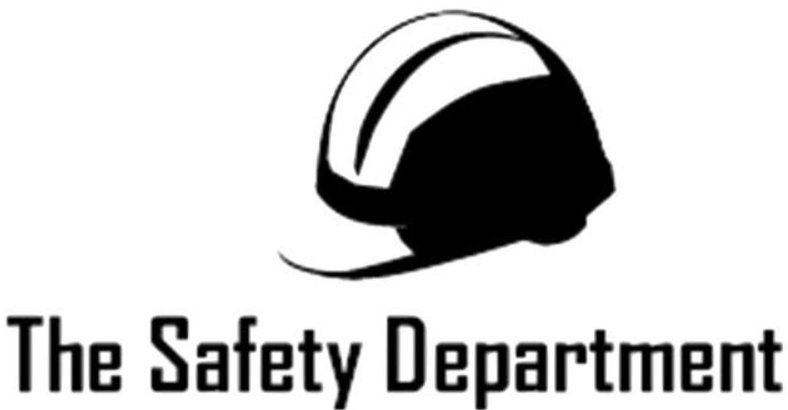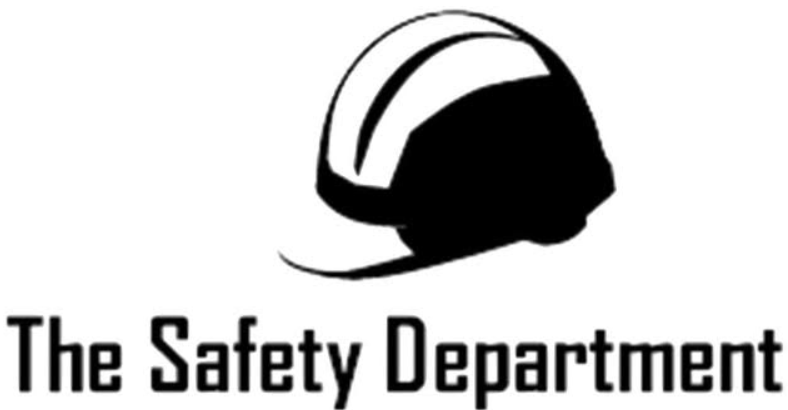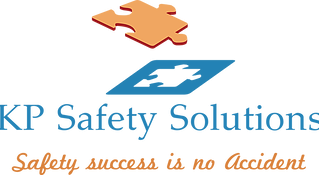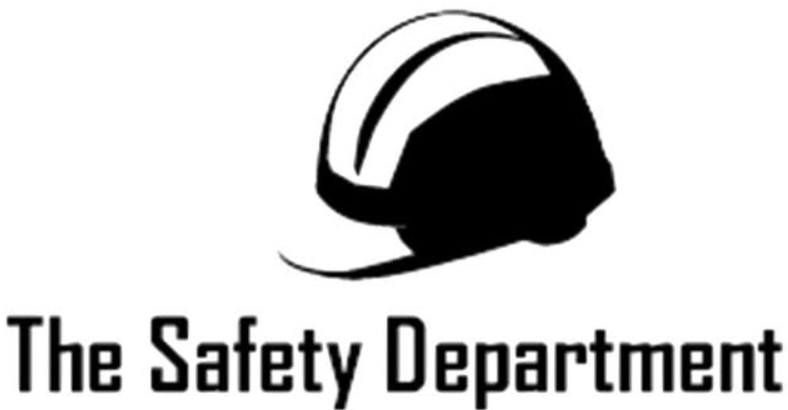Information
-
H&S Report for:
-
Site conducted
-
Location:
-
Conducted On:
-
Contract/Project Manager:
-
Site/Construction Manager:
-
Safety Consultant:
-
Safety Department Overview:
-
Obtain all new site managers email addresses in the notes section for action assignment
-
Previous Safety Department Inspection Date:
-
Further Safety Department Inspections required:
-
What Role is undertaken?
Site Safety:
-
Have there been an incidents or accidents in this reporting period?
-
No Accidents is Conformance. If an incident has occurred and has been managed correctly with follow up actions reporting, investigation and preventative measures assessed and applied this is an OFI but does not deduct a score. Mark as non conformance if incident was reasonably foreseeable/due to poor management or where no suitable actions have been take to report, record or prevent reoccurrence.
-
Protection/Appearances/Access to site (working area) safe and sufficient (third parties, other building users, clients, public)? Is there adequate signage?
-
Work at heights/Trip/Slip/Fall Hazard eliminated or controlled, safe working practices?
-
Access equipment / scaffolding / platforms / edge protection / suitability of equipment (justification for ladders) / falling object protection?
-
Are Routes/Walkways/Housekeeping/Materials clear?
-
Plant, Machinery & Lifting Equipment/ Appliances / Lifting Operations (Test Certification)?
-
Are hand tools, power tools, workplaces, workbenches cutting/mixing stations safe and suitable?
-
Fire appliances/fire alarm systems/procedures/drills/signage?
-
Additional requirements may be required for buildings over 6 floors or 18m (high Rise / High Risk Buildings).
-
Are hot work managed safety with adequate controls in place.
-
PPE/RPE Compliance by all contractors?
-
General and task specific, appropriate to the nature of the work and anticipate hazards. Close fitting RPE must be FFFP3 minimum (for particulates) and face fitted. Harnesses require harness training, registers, user checks and formal inspections (usual frequency 6 months, 3months for scaffolders).
-
As suitable arrangements in place for Pedestrian Routes / Traffic Routes / Street Works Management / Deliveries? (Segregations/Signage etc)
-
Are their sufficient lighting levels and controls on electricity and other services (gas,oil,data)?
-
Lighting should be consistent throughout the space with adequate levels for the work being carried out.
-
Management, Control, Permits, Inspections, Registers and safe working practices in Confined Spaces/Excavations/Temporary Works?
-
An assessment should have been made to decide if a TWC needs to be appointed. MTS, scaffolds built to BS12811/TG20 (less than 50m unsheathed 25m sheeted), standard trench boxing may not need a TWC or specific design but still need to be registered and inspected. However specialist scaffolds, hoists, catadecks, propping, shoring, large formwork of falsework should be designed and where there are a number of temporary works or overlapping forces applied to temporary works then a TWC should be appointed, registers drawn up and inspections undertaken.
-
Storage areas are well organised, controlled and safe, safe stacking, appropriate locations, not difficult to access or causing hazards to operatives or others.
-
Other Hazards?
Health and Welfare:
-
Are the welfare facilities adequate for the project?
-
Hot or warm and cold running water to be provided. Must have water close to the toilets. Sufficient number of toilets (1 stall per 25 min). Rest area and place to prepare (heat)food and boil water. Charging facilities if required, drying room if needed.
-
Are first aid facilities and equipment sufficient, accessible and maintained?
-
Sufficient first aiders, 1x full FAAW trained for every 50 people, for low risk activities it could be an emergency first aider or appointed person. Available at all times, 1st aid kits should be accessible, regularly checked with content appropriate to the nature of works and risk (eye wash, defibrillator, splints, burns kit - if assessed to be relevant). The Health and Safety (First Aid) Regulations 1981 require all construction sites to have: a first aid box with enough equipment to cope with the number of workers on site, an appointed person to take charge of first-aid arrangements & information telling workers the name of the appointed person or first aider and where to find them. A notice in the site office or notice board is a good way of doing this
-
Are there additional hand washing / hand sanitiser stations and signage?
-
Is there an suitable and sufficient cleaning regime in place, Cleanliness (offices, toilets, welfare facilities) (CDM 15 Requirements)
-
HAVS Control / Manual Handling
-
COSHH/Noise/Dust/Ventilation - Adequate controls and information in place and communicated (including TExT for on tool extraction)?
-
On tool extraction units must be thoroughly examined every 14 months. If Hired Hire companies must have provided evidence of this. See CIS69
-
Is Asbestos suitably managed and controls communicated?
Management
-
Have all previous report actions (internal/external) been closed out?
-
Have any disciplinary issues been raised during this reporting period.
-
If no disciplinary action is relevant, this should be marked as not applicable/ If the client Site Manager has carried out discipline reaction in order to enforce or maintain health and safety standards then this should be put down as a compliance. If further action has been taken in order to set new or highest standards as a result than this should be seen as best practice. If disciplinary action has been taken against the client manager or workers for any reason this should trigger observation or non-performance. (depending on severity and context).
-
Is welfare and security provided by the Contractors
-
Is sufficient Pre-Construction Information available on site?
-
Has the Construction Phase Plan been reviewed and remains relevant and sufficiently developed?
-
Are arrangements in place for collation of O&M manuals and safety file information?
-
Have all operatives been inducted, briefed and put to work safely Inductions?
-
Are RAMS in place (Including method statements checked and approved and specialist risk assessments (Noice, CoSHH, Vibration, Vulnerable people, where necessary)?
-
Safety Records/Statutory Registers/Permits to Work in place and effectively used?
-
Safety Reviews/Inspections/Monitoring/Communication/Coordination/Training Certification?<br>
-
Environmental Issues/Waste management/Energy Usage/Hazardous waste/Spill Kit
-
Notices/Signage/Posters
Supply Chain
-
Is work Sub-Contracted (or Sub-Sub Contracted) - (other than labour only sub contractors)?
-
Contractor 1
-
Contractor 2
-
Contractor 3
-
Contractor 4
-
Contractor 5
-
Contractor 6
-
Other Contractors including client direct works
-
Are there any Major Non Conformances included within this report which could be an immediate risk to life or something which requires immediate escalation to senior management?
-
Have Other Examples of Good Working Practice been Observed During the Inspection?
Guideline to the scoring matrix
-
BP = Best practice (Excellent standard above industry standard - should be shared within business)
Conformance = Reaches company standards
Observation (Opportunity for Improvement - OFI)= Does not present an immediate risk to safety but requires improvement
Non-Conformance = Does not comply with legislative requirements or company policy - Requires action within prescribed timeframe
Guide to scoring
10. = Best practice' approach to H&S. Consistent Exceptional Standards -Going above & beyond company policy, taking initiative / lead to promote H&S / should be shared with the rest of the business
9. = Meets company policy / Deemed to be safe, legally compliant and conforms with company policy and practice. - A high Standard of safety and health management
1-8 = Concerns / Improvement action required
0. = Uncontrolled Risks / No Safe System of Work (SSOW)
90- 100. = Exceptional / Excellent consistent industry leading approach to health and safety
80-89. = Good safe systems of work and meets company expectations
60-79. = May be generally good but several areas of improvement of unsafe practices were observed or witnessed - A better more active approach to H&S / contractor control is required
<60. = Standards well below company requirements in more than one area.
Site Safety:
-
Have there been an incidents or accidents in this reporting period?
-
No Accidents is Conformance. If an incident has occurred and has been managed correctly with follow up actions reporting, investigation and preventative measures assessed and applied this is an OFI but does not deduct a score. Mark as non conformance if incident was reasonably foreseeable/due to poor management or where no suitable actions have been take to report, record or prevent reoccurrence.
-
Protection/Appearances/Access to site (working area) safe and sufficient (third parties, other building users, clients, public)? Is there adequate signage?
-
Work at heights/Trip/Slip/Fall Hazard eliminated or controlled, safe working practices?
-
Access equipment / scaffolding / platforms / edge protection / suitability of equipment (justification for ladders) / falling object protection?
-
Are Routes/Walkways/Housekeeping/Materials clear?
-
Plant, Machinery & Lifting Equipment/ Appliances / Lifting Operations (Test Certification)?
-
Are hand tools, power tools, workplaces, workbenches cutting/mixing stations safe and suitable?
-
Fire appliances/fire alarm systems/procedures/drills/signage?
-
Additional requirements may be required for buildings over 6 floors or 18m (high Rise / High Risk Buildings).
-
Are hot work managed safety with adequate controls in place.
-
PPE/RPE Compliance by all contractors?
-
General and task specific, appropriate to the nature of the work and anticipate hazards. Close fitting RPE must be FFFP3 minimum (for particulates) and face fitted. Harnesses require harness training, registers, user checks and formal inspections (usual frequency 6 months, 3months for scaffolders).
-
As suitable arrangements in place for Pedestrian Routes / Traffic Routes / Street Works Management / Deliveries? (Segregations/Signage etc)
-
Are their sufficient lighting levels and controls on electricity and other services (gas,oil,data)?
-
Lighting should be consistent throughout the space with adequate levels for the work being carried out.
-
Management, Control, Permits, Inspections, Registers and safe working practices in Confined Spaces/Excavations/Temporary Works?
-
An assessment should have been made to decide if a TWC needs to be appointed. MTS, scaffolds built to BS12811/TG20 (less than 50m unsheathed 25m sheeted), standard trench boxing may not need a TWC or specific design but still need to be registered and inspected. However specialist scaffolds, hoists, catadecks, propping, shoring, large formwork of falsework should be designed and where there are a number of temporary works or overlapping forces applied to temporary works then a TWC should be appointed, registers drawn up and inspections undertaken.
-
Storage areas are well organised, controlled and safe, safe stacking, appropriate locations, not difficult to access or causing hazards to operatives or others.
-
Other Hazards?
Health and Welfare:
-
Are the welfare facilities adequate for the project?
-
Hot or warm and cold running water to be provided. Must have water close to the toilets. Sufficient number of toilets (1 stall per 25 min). Rest area and place to prepare (heat)food and boil water. Charging facilities if required, drying room if needed.
-
Are first aid facilities and equipment sufficient, accessible and maintained?
-
Sufficient first aiders, 1x full FAAW trained for every 50 people, for low risk activities it could be an emergency first aider or appointed person. Available at all times, 1st aid kits should be accessible, regularly checked with content appropriate to the nature of works and risk (eye wash, defibrillator, splints, burns kit - if assessed to be relevant). The Health and Safety (First Aid) Regulations 1981 require all construction sites to have: a first aid box with enough equipment to cope with the number of workers on site, an appointed person to take charge of first-aid arrangements & information telling workers the name of the appointed person or first aider and where to find them. A notice in the site office or notice board is a good way of doing this
-
Are there additional hand washing / hand sanitiser stations and signage?
-
Is there an suitable and sufficient cleaning regime in place, Cleanliness (offices, toilets, welfare facilities) (CDM 15 Requirements)
-
HAVS Control / Manual Handling
-
COSHH/Noise/Dust/Ventilation - Adequate controls and information in place and communicated (including TExT for on tool extraction)?
-
On tool extraction units must be thoroughly examined every 14 months. If Hired Hire companies must have provided evidence of this. See CIS69
-
Is Asbestos suitably managed and controls communicated?
Management
-
Have all previous report actions (internal/external) been closed out?
-
Have any disciplinary issues been raised during this reporting period.
-
If no disciplinary action is relevant, this should be marked as not applicable/ If the client Site Manager has carried out discipline reaction in order to enforce or maintain health and safety standards then this should be put down as a compliance. If further action has been taken in order to set new or highest standards as a result than this should be seen as best practice. If disciplinary action has been taken against the client manager or workers for any reason this should trigger observation or non-performance. (depending on severity and context).
-
Is the Construction Phase Plan up to date, available, and reviewed regularly?
-
Is the F10 displayed on site along with all statutory and appropriate signage and information?
-
Site Security/Site Entry/Attendance Registers/Corporate Image with suitable arrangements for operatives, clients and other visitors in place?
-
Are there sufficient resources allocated to the project with suitable staffing and defined responsibilities?
-
Are contractors suitably managed and communicated with (Meetings, DABs, TBTs, Contractor Documentation Control, Management of Change)?
-
Has any disciplinary action been taken by the site management in this reporting period?
-
Have all operatives been inducted, briefed and put to work safely Inductions?
-
Are RAMS in place (Including method statements checked and approved and specialist risk assessments (Noice, CoSHH, Vibration, Vulnerable people, where necessary)?
-
Safety Records/Statutory Registers/Permits to Work in place and effectively used?
-
Safety Reviews/Inspections/Monitoring/Communication/Coordination/Training Certification?<br>
-
Environmental Issues/Waste management/Energy Usage/Hazardous waste/Spill Kit
-
Notices/Signage/Posters
Supply Chain
-
Is work Sub-Contracted (or Sub-Sub Contracted) - (other than labour only sub contractors)?
-
Contractor 1
-
Contractor 2
-
Contractor 3
-
Contractor 4
-
Contractor 5
-
Contractor 6
-
Other Contractors including client direct works
-
Are there any Major Non Conformances included within this report which could be an immediate risk to life or something which requires immediate escalation to senior management?
-
Have Other Examples of Good Working Practice been Observed During the Inspection?
Guideline to the scoring matrix
-
BP = Best practice (Excellent standard above industry standard - should be shared within business)
Conformance = Reaches company standards
Observation (Opportunity for Improvement - OFI)= Does not present an immediate risk to safety but requires improvement
Non-Conformance = Does not comply with legislative requirements or company policy - Requires action within prescribed timeframe
Guide to scoring
10. = Best practice' approach to H&S. Consistent Exceptional Standards -Going above & beyond company policy, taking initiative / lead to promote H&S / should be shared with the rest of the business
9. = Meets company policy / Deemed to be safe, legally compliant and conforms with company policy and practice. - A high Standard of safety and health management
1-8 = Concerns / Improvement action required
0. = Uncontrolled Risks / No Safe System of Work (SSOW)
90- 100. = Exceptional / Excellent consistent industry leading approach to health and safety
80-89. = Good safe systems of work and meets company expectations
60-79. = May be generally good but several areas of improvement of unsafe practices were observed or witnessed - A better more active approach to H&S / contractor control is required
<60. = Standards well below company requirements in more than one area.
Site Safety:
-
Have there been an incidents or accidents in this reporting period?
-
No Accidents is Conformance. If an incident has occurred and has been managed correctly with follow up actions reporting, investigation and preventative measures assessed and applied this is an OFI but does not deduct a score. Mark as non conformance if incident was reasonably foreseeable/due to poor management or where no suitable actions have been take to report, record or prevent reoccurrence.
-
Protection/Appearances/Access to site (working area) safe and sufficient (third parties, other building users, clients, public)? Is there adequate signage?
-
Work at heights/Trip/Slip/Fall Hazard eliminated or controlled, safe working practices?
-
Access equipment / scaffolding / platforms / edge protection / suitability of equipment (justification for ladders) / falling object protection?
-
Are Routes/Walkways/Housekeeping/Materials clear?
-
Plant, Machinery & Lifting Equipment/ Appliances / Lifting Operations (Test Certification)?
-
Are hand tools, power tools, workplaces, workbenches cutting/mixing stations safe and suitable?
-
Fire appliances/fire alarm systems/procedures/drills/signage?
-
Additional requirements may be required for buildings over 6 floors or 18m (high Rise / High Risk Buildings).
-
Are hot work managed safety with adequate controls in place.
-
PPE/RPE Compliance by all contractors?
-
General and task specific, appropriate to the nature of the work and anticipate hazards. Close fitting RPE must be FFFP3 minimum (for particulates) and face fitted. Harnesses require harness training, registers, user checks and formal inspections (usual frequency 6 months, 3months for scaffolders).
-
As suitable arrangements in place for Pedestrian Routes / Traffic Routes / Street Works Management / Deliveries? (Segregations/Signage etc)
-
Are their sufficient lighting levels and controls on electricity and other services (gas,oil,data)?
-
Lighting should be consistent throughout the space with adequate levels for the work being carried out.
-
Management, Control, Permits, Inspections, Registers and safe working practices in Confined Spaces/Excavations/Temporary Works?
-
An assessment should have been made to decide if a TWC needs to be appointed. MTS, scaffolds built to BS12811/TG20 (less than 50m unsheathed 25m sheeted), standard trench boxing may not need a TWC or specific design but still need to be registered and inspected. However specialist scaffolds, hoists, catadecks, propping, shoring, large formwork of falsework should be designed and where there are a number of temporary works or overlapping forces applied to temporary works then a TWC should be appointed, registers drawn up and inspections undertaken.
-
Storage areas are well organised, controlled and safe, safe stacking, appropriate locations, not difficult to access or causing hazards to operatives or others.
-
Other Hazards?
Health and Welfare:
-
Are the welfare facilities adequate for the project?
-
Hot or warm and cold running water to be provided. Must have water close to the toilets. Sufficient number of toilets (1 stall per 25 min). Rest area and place to prepare (heat)food and boil water. Charging facilities if required, drying room if needed.
-
Are first aid facilities and equipment sufficient, accessible and maintained?
-
Sufficient first aiders, 1x full FAAW trained for every 50 people, for low risk activities it could be an emergency first aider or appointed person. Available at all times, 1st aid kits should be accessible, regularly checked with content appropriate to the nature of works and risk (eye wash, defibrillator, splints, burns kit - if assessed to be relevant). The Health and Safety (First Aid) Regulations 1981 require all construction sites to have: a first aid box with enough equipment to cope with the number of workers on site, an appointed person to take charge of first-aid arrangements & information telling workers the name of the appointed person or first aider and where to find them. A notice in the site office or notice board is a good way of doing this
-
Are there additional hand washing / hand sanitiser stations and signage?
-
Is there an suitable and sufficient cleaning regime in place, Cleanliness (offices, toilets, welfare facilities) (CDM 15 Requirements)
-
HAVS Control / Manual Handling
-
COSHH/Noise/Dust/Ventilation - Adequate controls and information in place and communicated (including TExT for on tool extraction)?
-
On tool extraction units must be thoroughly examined every 14 months. If Hired Hire companies must have provided evidence of this. See CIS69
-
Is Asbestos suitably managed and controls communicated?
Management
-
Have all previous report actions (internal/external) been closed out?
-
Have any disciplinary issues been raised during this reporting period.
-
If no disciplinary action is relevant, this should be marked as not applicable/ If the client Site Manager has carried out discipline reaction in order to enforce or maintain health and safety standards then this should be put down as a compliance. If further action has been taken in order to set new or highest standards as a result than this should be seen as best practice. If disciplinary action has been taken against the client manager or workers for any reason this should trigger observation or non-performance. (depending on severity and context).
-
Is the site file fully up to date with sufficient forms/templates records?
-
Do all staff hold the necessary competencies for the task they are undertaking?
-
Is adequate information, instruction, supervision provided?
-
Have all operatives been inducted, briefed and put to work safely Inductions?
-
Are RAMS in place (Including method statements checked and approved and specialist risk assessments (Noice, CoSHH, Vibration, Vulnerable people, where necessary)?
-
Safety Records/Statutory Registers/Permits to Work in place and effectively used?
-
Safety Reviews/Inspections/Monitoring/Communication/Coordination/Training Certification?<br>
-
Environmental Issues/Waste management/Energy Usage/Hazardous waste/Spill Kit
-
Notices/Signage/Posters
Supply Chain
-
Is work Sub-Contracted (or Sub-Sub Contracted) - (other than labour only sub contractors)?
-
Contractor 1
-
Contractor 2
-
Contractor 3
-
Contractor 4
-
Contractor 5
-
Contractor 6
-
Other Contractors including client direct works
-
Are there any Major Non Conformances included within this report which could be an immediate risk to life or something which requires immediate escalation to senior management?
-
Have Other Examples of Good Working Practice been Observed During the Inspection?
Guideline to the scoring matrix
-
BP = Best practice (Excellent standard above industry standard - should be shared within business)
Conformance = Reaches company standards
Observation (Opportunity for Improvement - OFI)= Does not present an immediate risk to safety but requires improvement
Non-Conformance = Does not comply with legislative requirements or company policy - Requires action within prescribed timeframe
Guide to scoring
10. = Best practice' approach to H&S. Consistent Exceptional Standards -Going above & beyond company policy, taking initiative / lead to promote H&S / should be shared with the rest of the business
9. = Meets company policy / Deemed to be safe, legally compliant and conforms with company policy and practice. - A high Standard of safety and health management
1-8 = Concerns / Improvement action required
0. = Uncontrolled Risks / No Safe System of Work (SSOW)
90- 100. = Exceptional / Excellent consistent industry leading approach to health and safety
80-89. = Good safe systems of work and meets company expectations
60-79. = May be generally good but several areas of improvement of unsafe practices were observed or witnessed - A better more active approach to H&S / contractor control is required
<60. = Standards well below company requirements in more than one area.









